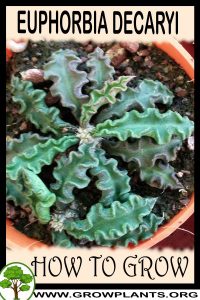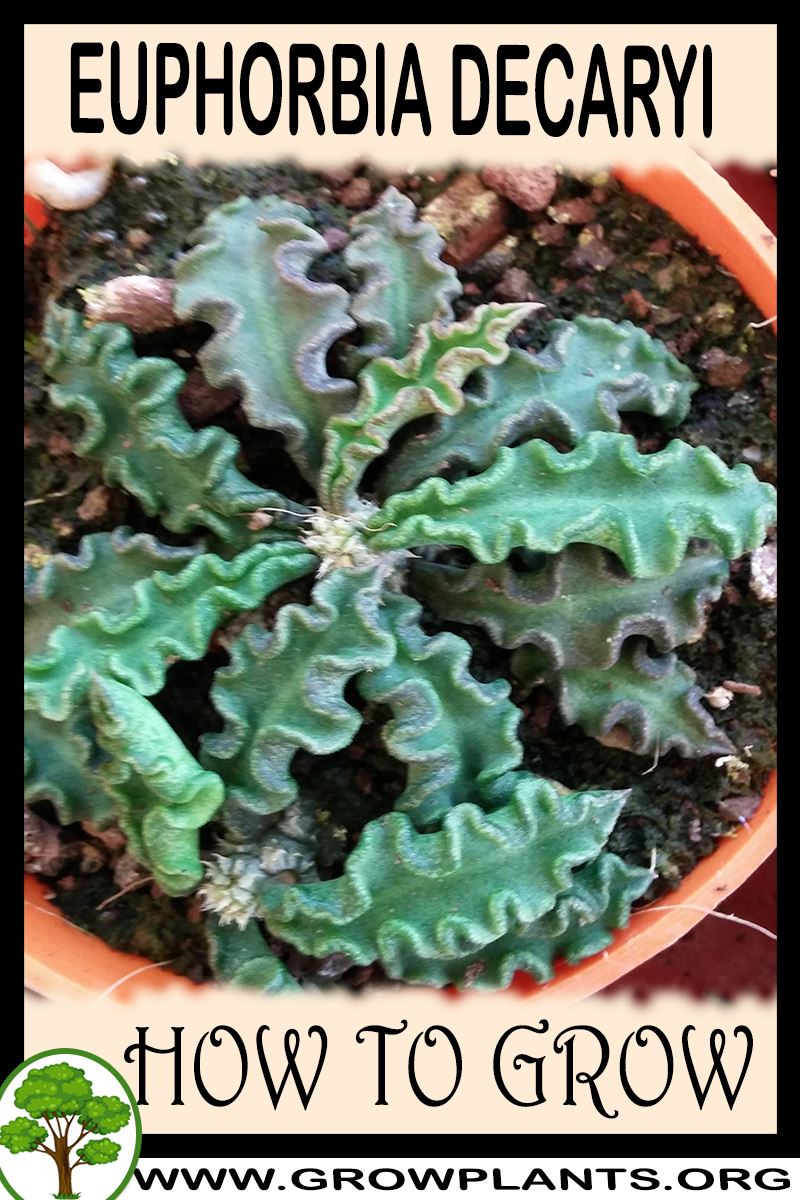
Euphorbia decaryi grow and care – subshrub succulent of the genus Euphorbia also known as Euphorbia decary, Euphorbia decaryi perennial evergreen used as ornamental plant, drought tolerant plant and looks like bonsai, can grow in subtropics or dry tropics climate or as houseplant and growing in hardiness zone 10b+.
Leaves color dark green or purple the leaves hairy and little flashy in linear shape with wavy margin, leaves grow in rosette structure.
Euphorbia decaryi flowers
Flower color brown or yellow-green with two sepals.
Euphorbia decaryi for sale – Seeds or Plants to Buy
How to grow Euphorbia decaryi growing and care:
More than 12C (but can survive in 6C), well-drained soil, sandy soil, fertilizer in the summer is important and if you grow it in the tropical can be most of the year, it’s tropical plant that usually grow between 20-30C (70-90F) any change out of this will cause problem, sensitive to big change in temperature, in hotter temperature increase amount of water and reduce sun exposure, in cooler temperature increase sun exposure and reduce the water
What is the best way to start growing?
Plant / Seed are rare and hard to germinate need to use fresh seeds, better sow in the spring to summer but not sure that seeds will be viable, better to sow it directly if the weather not fit sow indoor, water regularly but small amount keep the soil with little moist and don’t let it dry, better sandy soil with good drainage, better half shade with morning sun / Vegetative reproduction – cutting leaves or stems, from stems it is easier, cut stem wait 24 hours then plant it in the soil and treat it the same as adult be careful not to put too much water it will kill the plant, leaves cutting it’s the same but the ratio of success lower.
Is it necessary to use vegetative reproduction?
No, but easier it’s hard to germinate and for the purple leaves cultivars better to start from cutting
Difficulties or problems when growing:
Toxic, very sensitive plant
Recommended planting season?
All year, in hardiness zone 10b better in the spring, in cold area the plant is in dormant in winter
Pests and diseases:
Slugs, aphids
Pruning season:
Autumn / Winter
How to prune:
Dead leaves
Size of the plant?
10-20 cm, 4-8 inches
Growth speed in optimal condition:
Slow growing
Water requirement:
Small amount of water, the plant die in overwater let the soil dry little bit and not fully between each watering, but don’t let it be dry for long periods, when plant it in full sun need to increase the amount of water in summer
Light conditions in optimal condition for growing:
Full sun, half shade, full shade, prefer half sun, possible to grow in less or more but need to reduce or increase the amount of water and won’t bloom in full shade
Is it possible to grow indoor as houseplant?
Yes, with light, if it’s grow in cold area far from window, heaters and air-condition
Growing is also possible in a planter /flowerpot / containers:
Yes, need well ventilate soil with good drainage, soil need to be lightly and better to put inert material or even little stones in the bottom of the pot
Blooming information
Bloom season:
Spring
General information about the flower
Brown or yellow-green flower with two sepals
Scientific name:
Euphorbia decaryi
Categories
| Blooming Seasons |
|
|---|---|
| Flower colors |
|
| Climate |
|
| Leaf color |
|
| Ornamental parts |
|
| Plant growing speed |
|
| Plant life-form |
|
| Plant Uses |
|
| Planting Season |
|
| Plants sun exposure |
|
| Watering plants |
|
| Hardiness zone |
|



